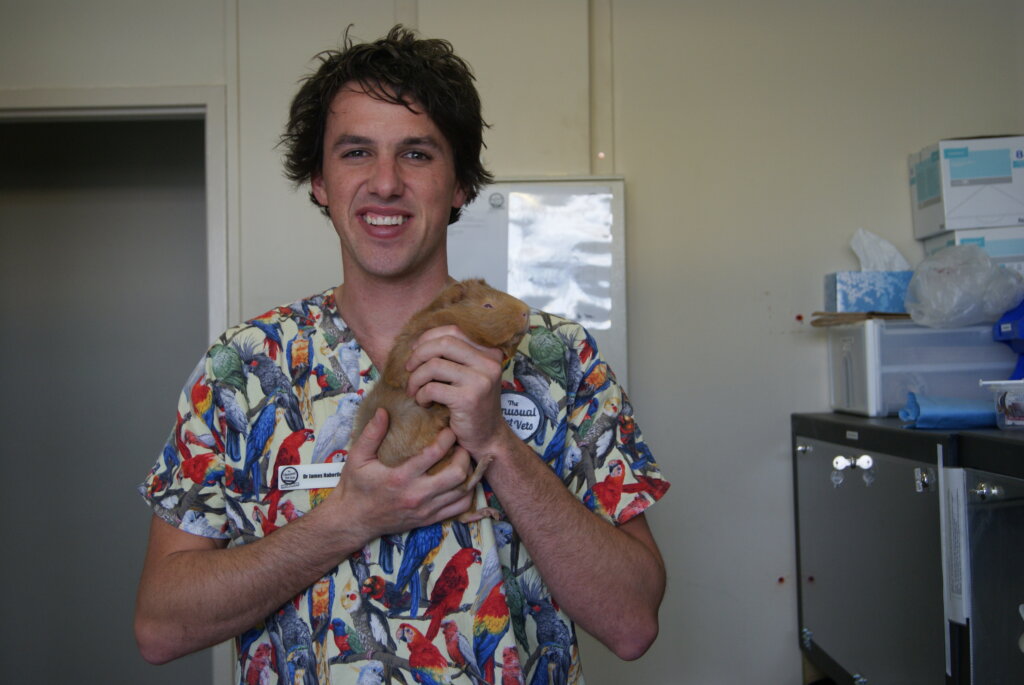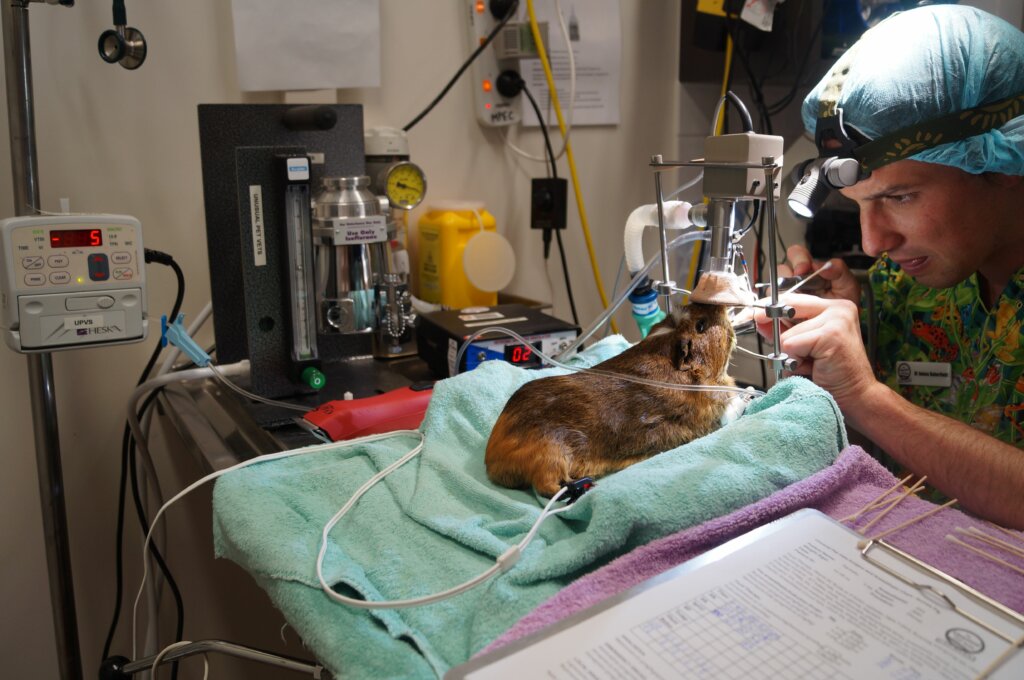A close look at dental disease in guinea pigs by James Haberfield

Guinea pigs are intriguing animals. Each have their own unique personalities. Some are boisterous and bossy, others shy and timid, however, all of them can make wonderful pets in the right environment. One of the most common problems we see in guinea pigs is the development of life-threatening dental disease. It is a horrible problem that we see all too commonly. This article looks at the common signs of dental disease, how to prevent it happening to your guinea pig and also what treatment options are available.
What is dental disease?
Dental disease is a term that relates to problems with teeth. The term is used for a number of species and means something different in each species. For example ferrets commonly get tartar build up on their teeth, where as rabbits develop sharp spurs that can dig into their tongue or cheek. However, both problems are referred to as dental disease. Guinea pigs have two long slender incisors at the front of their mouth on both their upper and lower jaws as well as four ‘cheek’ teeth (one premolar and three molars) on each occlusal surface at their back of their mouth. In between these areas is a little gap called the diastema. Guinea pig teeth grow constantly throughout their life and if they are not being worn down by chewing on lots of hay or grass, they start to elongate. The most common form of dental disease in guinea pigs involves the elongation of their cheek teeth. The mandibular (bottom jaw) cheek teeth are often
the worst affected and they can get so bad that they can grow over and totally ‘entrap’ the tongue. This prevents the tongue from moving normally which means the guinea pig cannot eat properly. Other forms of dental disease in guinea pigs include dental abscess formation, irregular wear, elongation of the tooth roots, incisor problems and the presence of sharp spurs that can ulcerate the tongue or cheek.
What symptoms should I watch out for?
Symptoms vary for each individual animal and can be very subtle with some guinea pigs presenting with weight loss as their only symptom. More commonly, excessive salivation and changes in eating preferences (not eating or only eating softer foods) are seen. Other symptoms can include weakness, facial swellings, vocalisation, not passing any faeces, not moving much, secondary respiratory infections and even death.
How do you diagnose dental disease?
Dental disease can often be diagnosed by an intraoral (looking inside the mouth) examination by an experienced guinea pig vet. Your vet will generally use a specialised speculum or otoscope to look inside your guinea pig’s mouth. In some cases, dental disease is not always obvious on an intraoral exam and in these cases, radiographs (x-rays), CT or an examination under general anaesthesia may be recommended. It is important to mention that while dental disease can often be diagnosed on examination, radiographs or CT are always a good idea as they allow your vet to accurately assess how severe your guinea pig’s dental disease is and decide on the best treatment plan.

What treatment options are available?
The treatment options available depend on the severity of the dental disease. For mild cases, the treatment may be as simple as increasing the amount of hay or grass in your guinea pig’s diet. For more serious cases, a dental procedure under general anaesthesia may be needed. This involves using a specialised diamond coated dental burr to carefully correct your guinea pig’s teeth back to the length and angle that they should be. In some advanced cases tooth extraction is needed. Dental disease can be a very painful condition for your guinea pig, so pain relief as well as supportive feeding is often needed.
How do I prevent dental disease from occurring?
The good news is that while dental disease is often difficult to treat, it is generally easy to prevent. The best method of prevention is to ensure that your guinea pig is fed a well-balanced diet with lots of hay or grass. We recommend that guinea pigs have a diet based around 80% hay or grass, 15-20% appropriate vegetables +/- 5% high quality guinea pig pellets. This promotes good dental wear, normal gastrointestinal function and appropriate water intake. Low vitamin C levels are also a risk factor for the development of dental disease, so it is a good idea to ensure that your guinea pig is
getting enough vitamin C in their diet. This can be provided in their vegetables, some specialised guinea pig pellets or in a separate vitamin C supplement. Regular check ups by an experienced guinea pig vet are recommended as they allow dental disease to be detected early before it is too late.
Can it be cured?
Unfortunately, unless the disease is caught early it is very difficult to permanently cure. This is often because the angle that the teeth grow on has changed so even with correction the teeth will still grow back abnormally. Many guinea pigs with dental disease need regular dental procedures every 1-12 months for their whole life.
Dr James Haberfield BSc BVMS PGCBM MANZCVS (Medicine and Surgery of Unusual Pets, Avian Health)
